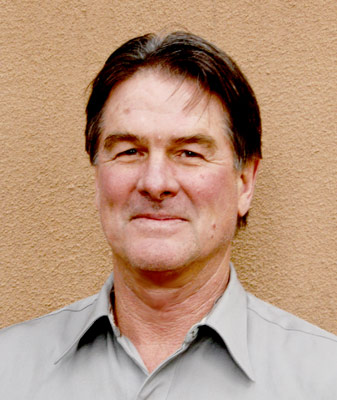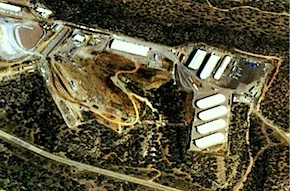We’re lucky in that it appears Los Alamos Lab has dodged the bullet with respect to the Las Conchas Fire, but I do want to say something about 100,000 acres of some of the most beautiful land in New Mexico burning up in the Jemez Mountains. I know it fairly well.
Back in the early 1980’s I would take my kids out on a full moon night in the winter after it snowed on Highway 4 near the Valle Grande and pull them on an upside down car hood chained to my pickup (not recommended, but they loved it). I use to rock climb a lot at the Las Conchas Canyon on the east fork of the Jemez River (near where the fire broke out), and down at the southern end of the fire at Cochiti Mesa and Eagle Canyon (the erosion in Eagle Canyon after the 1996 Dome Fire was shocking, a harbinger of what is to come with this fire). I remember taking my kids to the beautiful Santa Clara Canyon to the north, which the fire is now devastating (my heartfelt condolences to the Pueblo). My parents took photos of me and my two brothers when we were small in the late 1950’s sitting in a Bandelier National Monument “cavate” (a hole in the canyon volcanic tuff further carved out by the Anasazi to live in), posing as the three little monkeys who hear no evil, see no evil, speak no evil.
As an adult I’ve been back country many times in Bandelier (now half burned), where on a map it looks like you walk say 5 miles but it will actually be eight by the time you climb up and down canyons. I know of a ponderosa pine in the Jemez where a buddy bigger than me (and I’m six feet) and I could not touch our fingers together while hugging its girth. I’m a tree hugger, but I also had chain saw thinning contracts all over the Jemez, including one on the south rim of the Frijoles Canyon above Bandelier (where thinning is sorely needed). I would occasionally run across unexcavated Anasazi pueblos and walls.
I’ve seen acres of trees in the Jemez covered with monarch butterflies during their migration to Mexico.
All this burned area is beautiful, beautiful country – beautiful forests, hoodoo rocks, clear streams, elk, bear, deer, eagles, hawks, peregrine falcons, ponderosa, pinon, alligator juniper in the south, blue spruce up high, New Mexico turquoise skies, deep snows in winter (in a good year) and hot springs. These beautiful Jemez Mountains (not really peaks, but the more you know this land the more it grows on you). Are typically wetter than most of New Mexico, but this year so dry, and burning.
I pray that the trees, animals and the rains come back. But we humans must do our part, in the near term taking preventative measures against what could be devastating erosion now that the trees and grasses are gone. We need better forest management practices that allow fire to periodically sweep the forests (ponderosa pine evolved to adapt to and benefit from these low intensity fires), instead of suppressing them to the point where catastrophic crown fires break out. Longer term we need to begin to grapple effectively with global climate change, otherwise we may never get our Jemez forests back.
And we should comprehensively clean up Los Alamos Lab, because while it dodged the bullet this time, it may not the next time.
Beautiful, beautiful Jemez land, much of it gone – I love it and now I’m deeply missing it.


